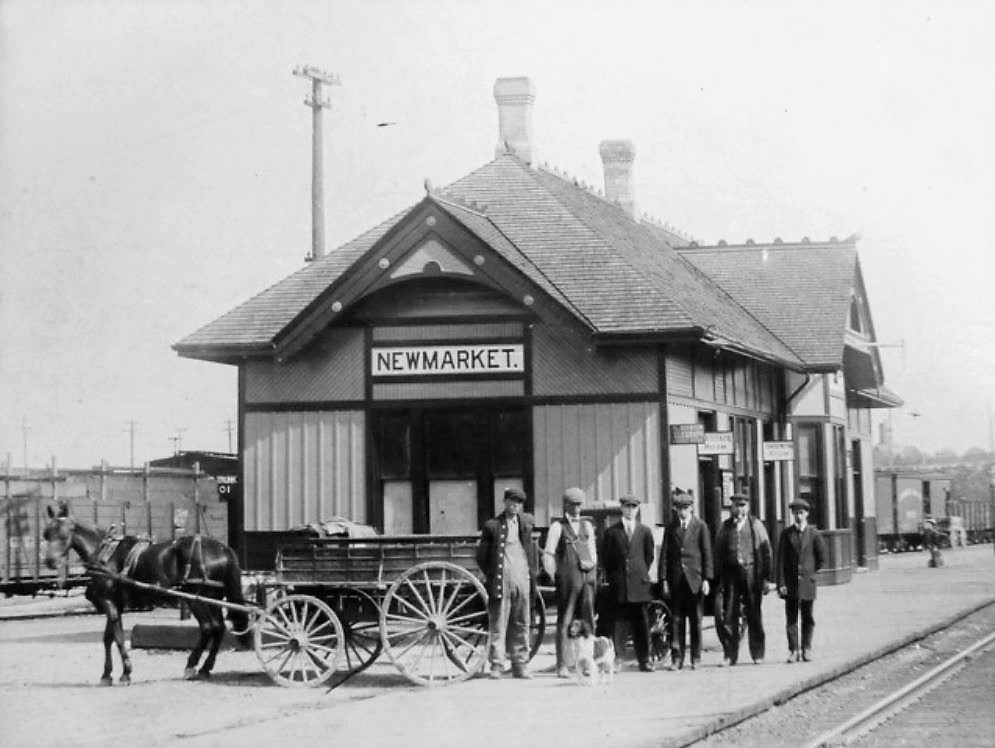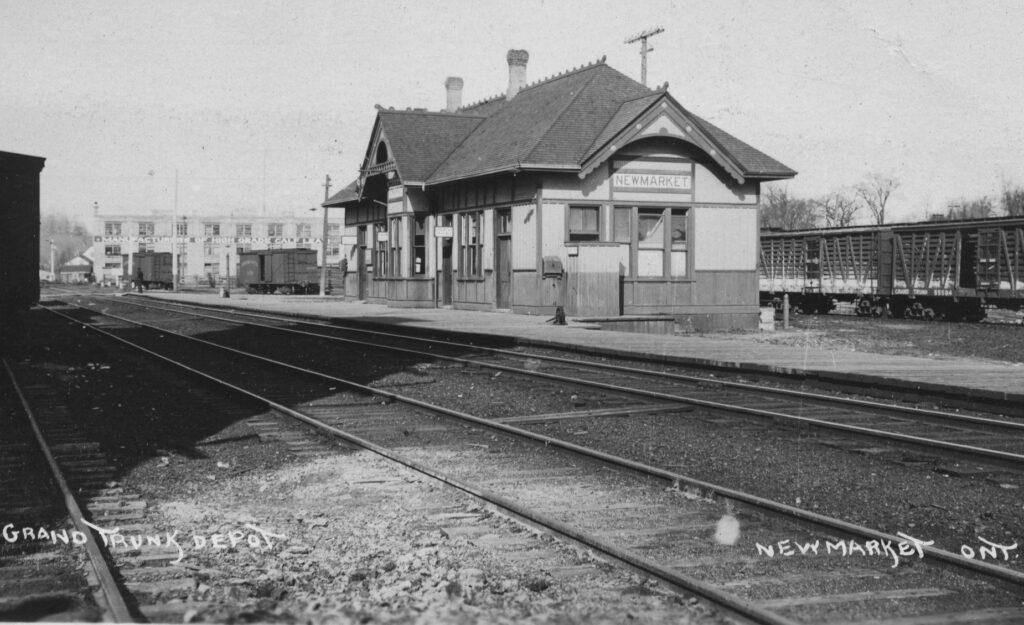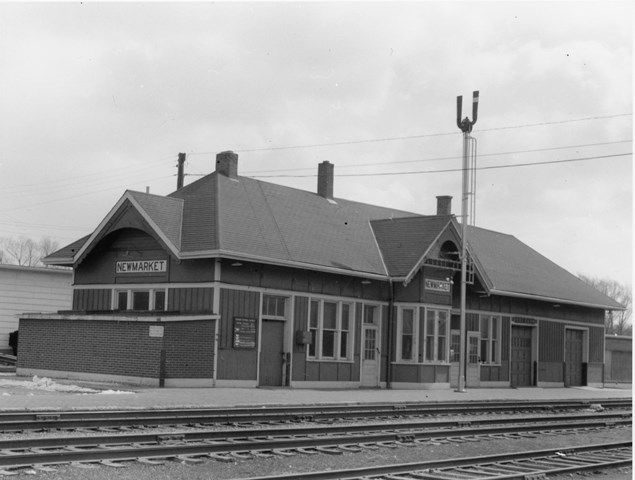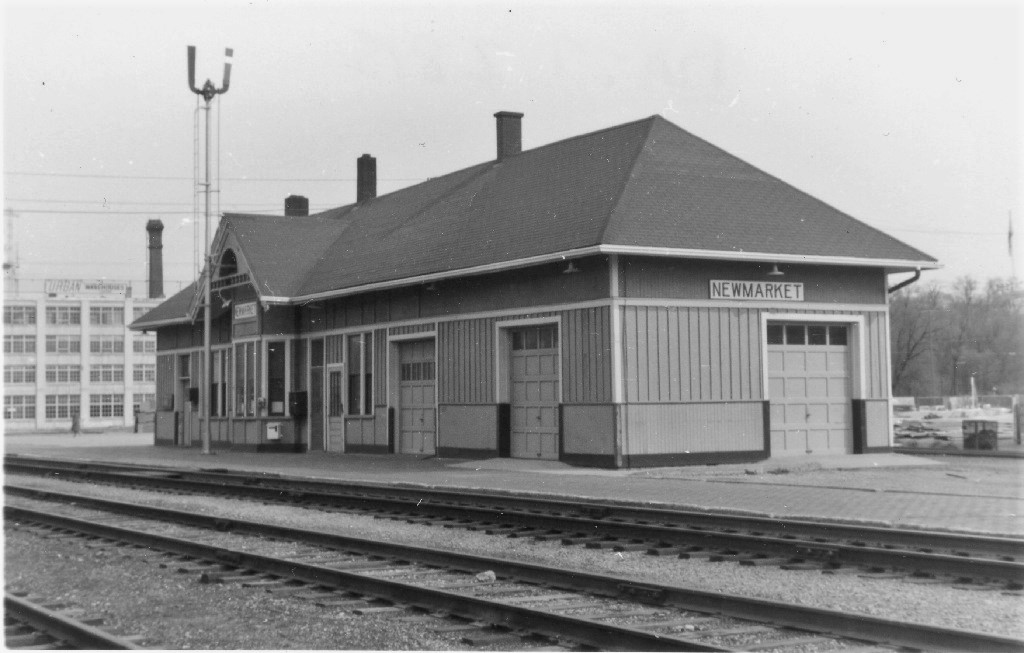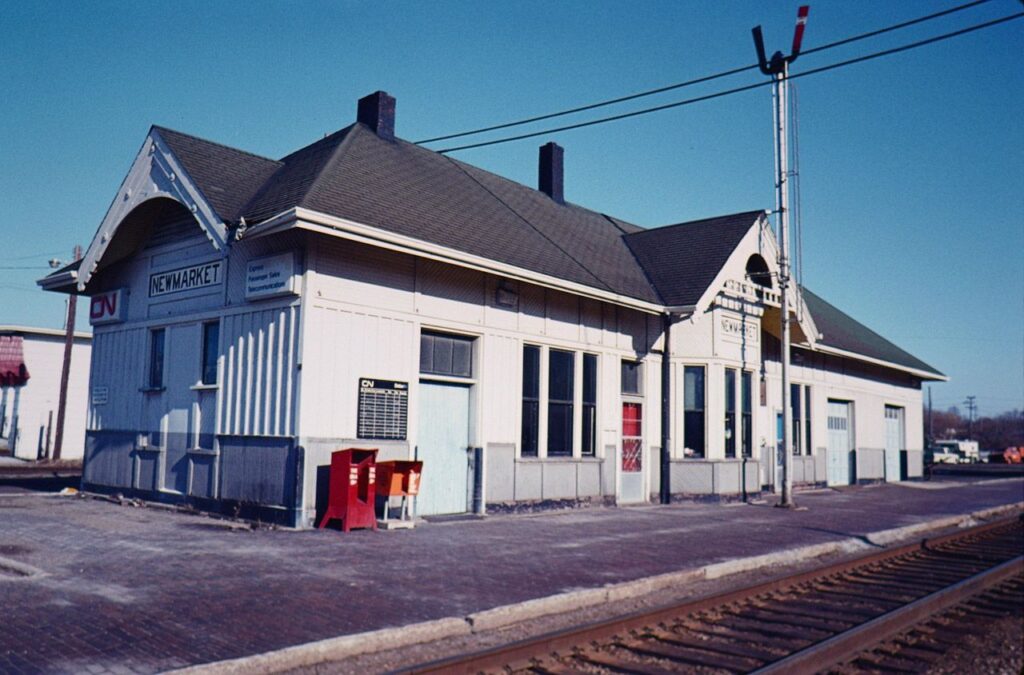Summary
Newmarket station was built in 1853 by the Ontario, Simcoe & Huron Railway while construction was progressing northward from Toronto. The station was a small wooden structure capable of serving the equally small community of Newmarket, which wouldn’t be incorporated until four years later in 1857 with a population of 700. While there are no known photographs of this station, it was likely a simple wooden structure that was identical to numerous other stations built by the OS&H elsewhere around the same time. The first passenger train arrived in Newmarket on June 13th, 1853 with service expanding further north in subsequent years. The OS&H was reorganized into the Northern Railway of Canada in 1859, and the station would change hands multiple times in the decades that followed. In June 1879, the Northern Railway merged with the Hamilton & North-Western Railway to form the Northern & North Western Railway. The railway’s original gauge of 5′ 6” standardized by the Government of Canada in 1851 had fallen out of favour by the 1870’s. The entire line from Toronto through Aurora to Gravenhurst was changed to 4′ 8.5” gauge in a single day on July 9th, 1881. Just several years later in 1888, the Northern & North Western was acquired by the much larger Grand Trunk Railway. A total of eight passenger trains would stop in Newmarket on a daily basis by 1893.
A replacement station was built by the Grand Trunk in 1900, following a standard design replicated in numerous places on the Grand Trunk system in the early 20th Century. It was a rectangular board-and-batten structure with a hipped roof and gables at its north, south, and west side. A bay window faced the tracks, allowing the station agent to see clearly in both directions from their office. Service to Newmarket had increased to fourteen trains per day by 1914. The Grand Trunk encountered financial difficulties during the early 20th century, culminating in its nationalization and subsequent absorption into Canadian National in 1923.
As automobiles gained popularity in the 20th century, passenger ridership began to significantly decline. At a local level, this was further intensified by the completion of Highway 400 in 1952. It was built roughly parallel with the railway and served many of the same communities. Passenger rail service to Newmarket was almost halved to just eight trains per day by 1955. Service had almost ended entirely when Canadian National implemented a 5-week trial commuter service between Toronto and Barrie in 1972, during a time when the relatively new GO Transit only served the corridor between Pickering and Oakville. The trial was a success, though regular commuter service to Newmarket didn’t resume until 1974. The train would come to be known colloquially as the “Barrie Bullet”, with one northbound and one southbound departure providing the only such service to Newmarket at the time. Canadian National spun off their remaining passenger service as VIA Rail in 1976, and it was turned into a separate crown corporation in 1977. VIA operated the Barrie Bullet until budget cuts in 1981 forced it to end, and GO Transit took over service to Barrie the following year.
GO Transit would use the former Grand Trunk station until they opened a new passenger station facility in the Tannery Mall across the street in 1987. The station was acquired by the Town of Newmarket the same year and designated a municipal heritage building under the Ontario Heritage Act to protect it from demolition. It gained federal protection under the Heritage Railway Stations Protection Act in 1992. The station’s exterior was restored and now serves as the Newmarket Chamber of Commerce.
Condensed Station Info:
| Location: | Served By: | Current State: | Date Built: | Date Demolished: |
| South side of Davis Drive | NRC (1853 – 1879) N&NW (1879 – 1888) GTR (1888 – 1923) CNR (1923 – 1978) VIA Rail (1978 – 1982) | Demolished (First) Repurposed and restored on site (Second) | 1853 (First) 1900 (Second) | 1900 (First) N/A (Second) |


